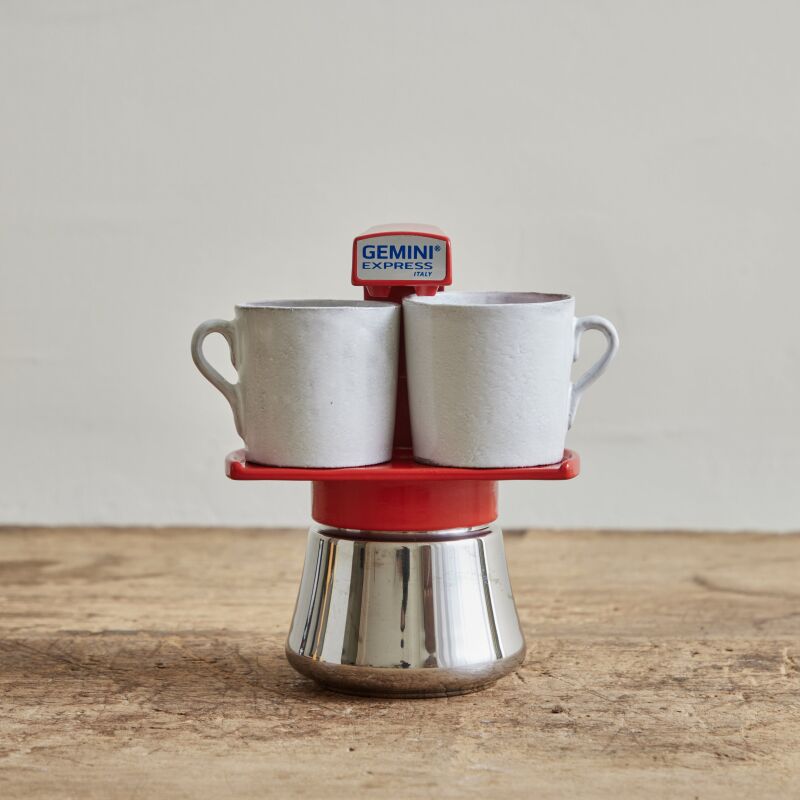“The designs are intricate, but also very muted and quiet.” Souad Larusi is describing the character of the Tuareg rugs she sources from Morocco. “When I see them, I imagine the Tuareg people sitting on them in the desert where there is no light and no sound. Can you imagine that? I wish I had bought more in the old days.”
Photographs courtesy of Larusi.

Souad has been buying and selling tribal rugs and textiles for twenty years. In that time, her eponymous north-London studio, Larusi, has become what the World of Interiors has called “a mecca for high quality antique and bespoke rugs.” Her eye for what one client (Ilse Crawford, no less) described as “earthy, expressive” vintage rugs contributed to the trend for the now-ubiquitous Beni Ourain rugs. (Souad was sourcing these from her native Morocco for years before high-street brands caught on.) “Now,” she says, “people want something new.”

Tuareg rugs are made across the Sahara Desert by nomadic tribespeople living in Mali, Niger, Algeria, Burkina Faso, Libya, and Mauritania. They are woven by hand using durable palm reeds and goat and camel leather. “They use what they have,” says Souad, who prefers mid-century finds to new designs, which are often paler in color. “However, if I come across a stunning new one that is well made, I will buy it.”

The patterns are unique and vary from simple muted bands of color to intricate, interwoven geometric patterns. To prevent fraying, the edges are stitched together with leather strips. Tassels are often left hanging in the corners or at one end of the rug.
Originally intended for use directly on the desert sands, Tuareg rugs are incredibly hard-wearing and versatile. “They were made to be layered with softer textiles for sleeping and sitting, so they lend themselves well to layering,” Souad explains. In the bedroom, for example, a large Tuareg under the bed could be softened with smaller rugs. “I also think they look great underneath dining tables,” Souad adds. If crumbs or spillages occur, they can simply be swept, vacuumed, or sponged down with natural cleaning products.

Natural, sustainable, and entirely unique, the restrained design of Tuareg rugs happens to appeal to Souad’s clientele of tastemakers, including stylists, interior designers, architects, actors, fashion designers, and artists. “The rugs have a timeless elegance and versatility that make them a perfect match for modern interiors,” says Souad.
N.B.: Rug hunters will be able to see for themselves this September, when Souad will be exhibiting a collection of 20 one-off Tuareg rugs at the Larusi Kentish Town studio as part of the London Design Festival (September 16-24).
For more Object Lessons, see:
- Object Lessons: The Nautical Hammock
- Object Lessons: The Autumnal Broom
- Object Lessons: The Shaker Peg Rail (Plus Five to Buy)
Frequently asked questions
What are Tuareg rugs?
Tuareg rugs are a type of handwoven rugs traditionally made by the Tuareg people, a nomadic group living in the Sahara Desert. These rugs are known for their unique designs and craftsmanship.
Where are Tuareg rugs from?
Tuareg rugs originate from the North African region, specifically from countries such as Mali, Niger, Algeria, Libya, and Burkina Faso.
What materials are used in making Tuareg rugs?
Tuareg rugs are primarily made from natural materials such as sheep or camel wool. The weavers dye the wool using natural plant and mineral dyes to create vibrant colors.
How are Tuareg rugs made?
Tuareg rugs are handwoven using a traditional weaving technique. The weavers use a vertical loom and carefully knot the wool threads to form the rug's design. It is a time-consuming and labor-intensive process.
What are the typical designs of Tuareg rugs?
Tuareg rugs often feature abstract and geometric patterns, reflecting the cultural heritage of the Tuareg people. These designs symbolize aspects of their nomadic lifestyles and spiritual beliefs.
Where can I buy Tuareg rugs?
Tuareg rugs can be purchased from various sources, including specialized rug retailers, online marketplaces, and artisanal craft stores. It's important to ensure the authenticity and fair trade practices when purchasing Tuareg rugs.
How do I care for a Tuareg rug?
To care for a Tuareg rug, regular vacuuming is recommended to remove dust and debris. Spot cleaning can be done using a mild detergent and water, but it's important to avoid excessive moisture. Professional cleaning may be required for deep cleaning or stubborn stains.
Are Tuareg rugs suitable for high-traffic areas?
Yes, Tuareg rugs are durable and can withstand moderate to high foot traffic. The tight weave and quality materials used in their construction make them suitable for both residential and commercial spaces.
Can Tuareg rugs be used outdoors?
While Tuareg rugs are primarily designed for indoor use, they can also be used in covered outdoor areas such as porches or patios. However, direct exposure to rain or harsh weather conditions should be avoided to maintain the rug's integrity.
Do Tuareg rugs come in different sizes?
Yes, Tuareg rugs come in various sizes, including small accent rugs, runner rugs, and large area rugs. The size options allow for versatile placement in different areas of your home or office.






Have a Question or Comment About This Post?
Join the conversation